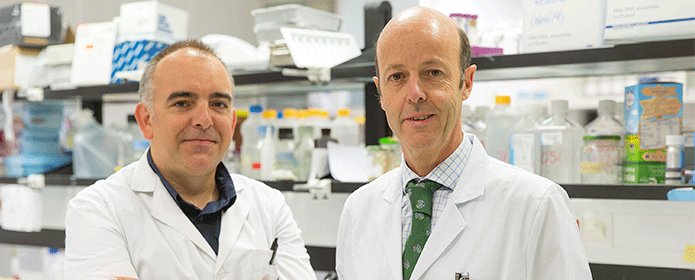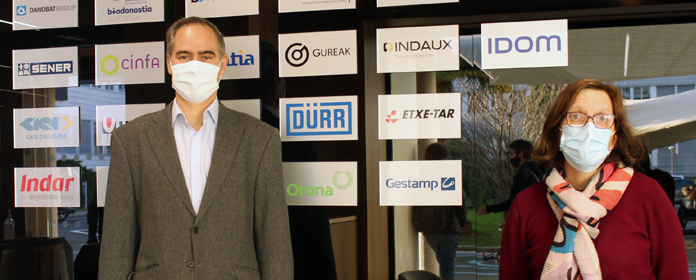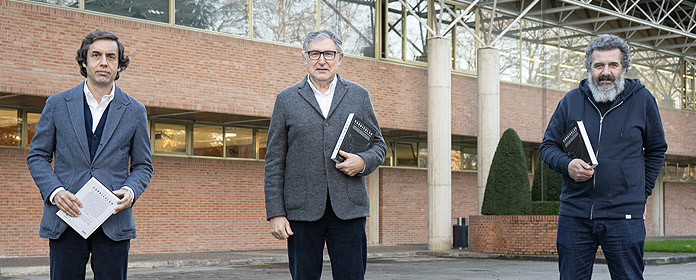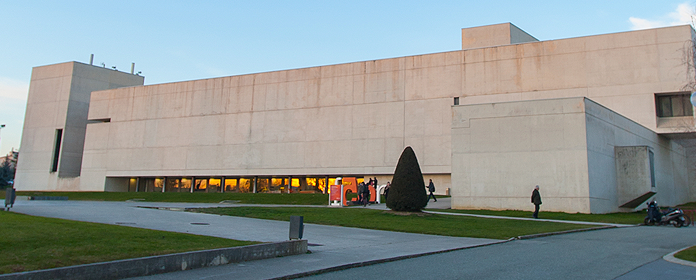New Treatment Remediates Bladder Cancer in Mice
Researchers from Cima, Clínica Universidad de Navarra, CIEMAT and Hospital Universitario 12 de Octubre, integrated within the Cancer CIBER (CIBERONC), demonstrate the anti-tumor efficacy of the combination of immunotherapy and the inhibition of two epigenetic proteins.

Researchers from the Clínica Universidad de Navarra and the Cimaresearch center biomedical; together with scientists from CIEMAT (Centro de Investigaciones Energéticas, Medioambientales y Tecnológicas) and the Hospital Universitario 12 de Octubre, all of them part of CIBERONC (research center Biomédica en network en Cáncer), demonstrate in animal models the anti-tumor efficacy against bladder cancer of a treatment that combines immunotherapy and the joint inhibition of two epigenetic proteins. This novel therapeutic approach has demonstrated, in the first month of treatment, the remission of 85% of tumors in animal models. The results have been published in the latest issue of the prestigious journal Nature Medicine.
Bladder cancer is one of the most frequent tumors. According to the association Española contra el Cáncer (AECC), about 12,200 cases are diagnosed annually in our country, affecting more men (it ranks fourth in incidence, after lung, prostate and colorectal cancer) than women. The problem with this tumor subject is not only its high prevalence and mortality, but also that when it is fought with the treatments available to date, there is a high probability of recurrence, even in more aggressive forms, and it must be eliminated by surgery and very specialized techniques, which pose a problem for health systems due to the high economic cost of its treatment. At present, immunotherapy has shown positive results, but in a relatively low percentage of patients (20-30%). Another drawback is that so far there are no known factors capable of determining, prior to treatment, which patients will benefit.
Combining immunotherapy with an epigenetic inhibitorThe link between bladder cancer and the alteration of certain epigenetic factors, molecular mechanisms that affect gene regulation, i.e., that condition the expression of genes involved in cancer development , has recently been described. This happens with the epigenetic proteins G9a and DNMT. In this work, coordinated by Drs. Felipe Prósper, from the Clínica Universidad de Navarra; Xabier Agirre, from the Cima; and Jesús M. Paramio, from CIEMAT and the Hospital Universitario 12 de Octubre, the researchers have developed a compound, CM-272, capable of blocking the activity of these proteins, and have examined its efficacy in a mouse model that develops aggressive and metastatic bladder tumors. Thus, the administration of CM-272, together with three doses of anti-PDL1 immunotherapy, caused the death of cancer cells and the activation of the immune system, enhancing the effect of immunotherapy and eliminating, in the first month of treatment, more than 85% of tumors and metastases. In addition, with this study, the researchers determined the role of the epigenetic protein G9a as a biomarker related to the response to the combined treatment.
These results represent a significant advance in personalized medicine against cancer and, specifically, in the management of this tumor subject , since they favor the response to treatment with immunotherapy in a higher percentage of patients, and make it possible to recognize, by previously analyzing the levels of the epigenetic protein G9a, which patients could benefit from these treatments.
Currently, in addition to analyzing whether similar effects can be found in other types of tumors, work has begun on the design clinical trials that would allow validation of the results obtained in this study and determine whether it is possible to transfer this treatment to the clinic.
-
reference letter bibliography:
https://doi.org/10.1038/s41591-019-0499-y




